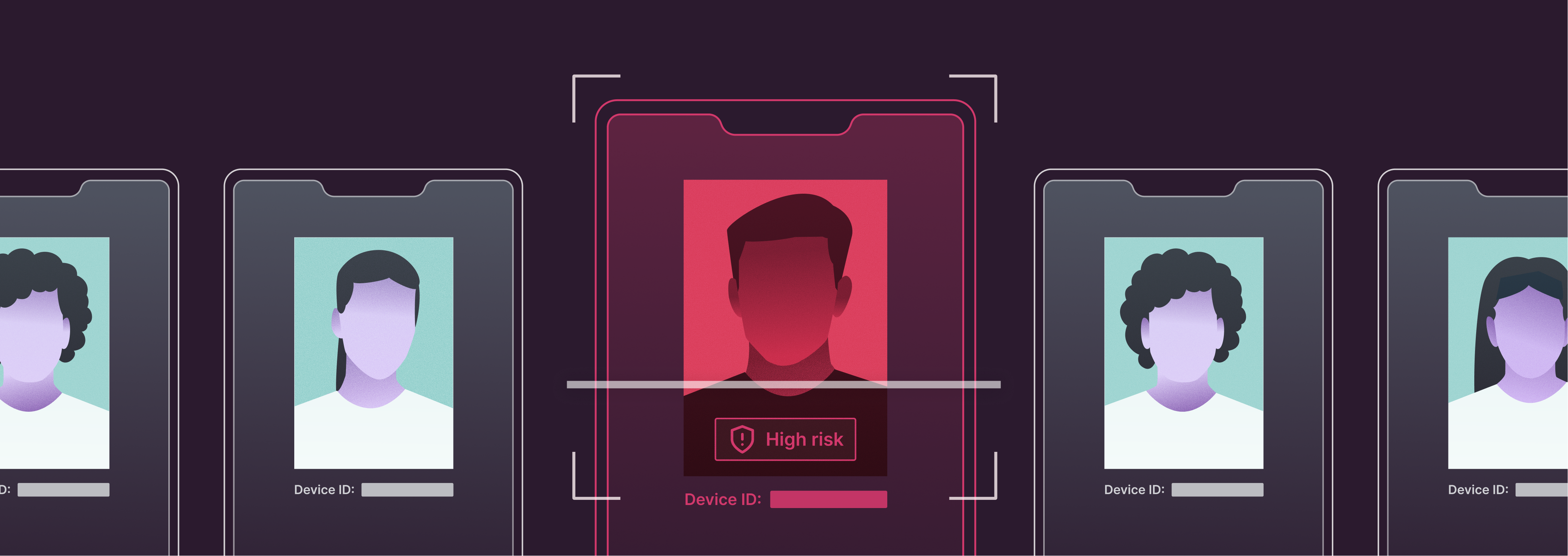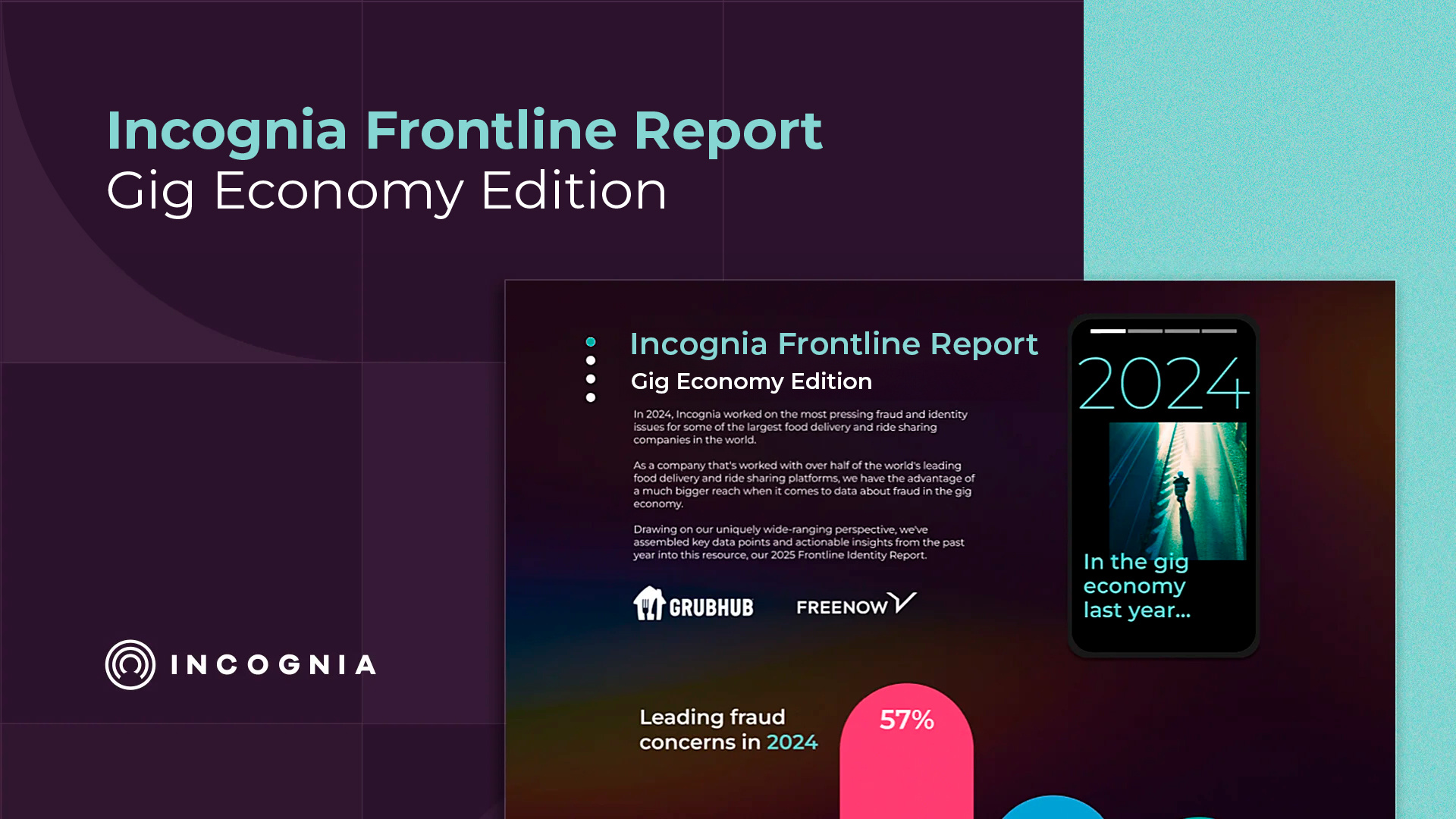- Blog
- 5 Ways Gig Economy Platforms Can Strengthen Fraud Prevention in 2026
5 Ways Gig Economy Platforms Can Strengthen Fraud Prevention in 2026
Delivery and ride sharing platforms can get ahead of fraud by tackling multi-accounting, verifying device integrity, preparing for industrialized attacks, connecting siloed data to uncover collusion, and making the business case that fraud prevention drives growth. Based on insights from Incognia’s State of Fraud in the Gig Economy report, these findings highlight where platforms can build smarter, more scalable defenses against emerging fraud threats.
Subscribe to the Incognia Newsletter
Fraudsters move fast. Gig economy platforms have to move faster.
Across delivery and ride sharing platforms, fraud is becoming more organized, automated, and industrialized, powered by tools that make it easy for bad actors to create fake accounts, tamper with apps, and scale abuse. It’s not just a handful of bad actors testing platform rules; it’s an economy of its own, running on speed, accessibility, and scale.
Based on findings from our State of Fraud in the Gig Economy report, we’ve identified five ways that delivery and ride sharing platforms can make their fraud prevention strategies stronger, smarter, and more scalable—from blocking multi-accounting at the source to emphasizing device integrity and breaking down internal silos.
1. Address multi-accounting and ban evasion at the root
Many major fraud types share a common enabler: multi-accounting.
Our research found that 73% of respondents’ top fraud concerns—like promo abuse, refund fraud, and ban evasion—are powered by multiple account creation. Different fraud types, same foundation: the ability for bad actors to create and leverage accounts at scale.
Fraudsters exploit weak onboarding and identity controls to spin up endless new accounts, powering abuse on all sides of the platform. Once banned, they simply reappear with new accounts.
To break the cycle of multi-accounting, platforms should prioritize robust device ID and location intelligence—signals that can persistently thwart fraudsters even when devices are tampered with, reset, or replaced.
Cutting off multi-accounting upstream doesn’t just chip away at fraud. It disrupts the entire ecosystem that depends on it.
2. Make device integrity the first line of defense
Device integrity is the foundation of every other fraud defense. Once a device is compromised, every downstream signal—device ID, location, even biometrics—loses reliability. If the environment can’t be trusted, neither can the data it produces.
Yet in our 2025 research, only 48% of respondents said their platform uses tamper detection—even though app tampering, code injection, and app cloning ranked among the top three manipulation concerns for both 2025 and 2026.
As a result, many platforms are still flying blind. Fraudsters rely on tools like app cloners, emulators, and GPS spoofing apps—all easily accessible—to manipulate device signals and bypass verification checks.
Tamper detection isn’t just another feature. It’s the foundational integrity layer that makes every other signal trustworthy. Without it, device signals, location intelligence, and other risk indicators become unreliable.
To strengthen downstream signals, platforms should check the integrity of the device environment before trusting what it tells them. Starting with a trustworthy foundation is key.
3. Prepare your defenses for industrialized fraud
Fraud is getting faster and more scalable. For both 2025 and 2026, delivery and ride sharing platforms ranked tactics like app cloning, tampering, and device farms among their top manipulation concerns.
These techniques are often combined to industrialize abuse: cloning apps to manage multiple accounts, tampering with devices to bypass security controls, and deploying farms of devices to spread fraud at scale.
These methods are top concerns at a time when Fraud-as-a-Service vendors are lowering the barrier to entry. Tools like app cloners and emulators are increasingly accessible to a wider base of bad actors, not just sophisticated fraudsters.
Device farms remain a steady enabler of fraud at scale. And, based on what the Incognia team is observing, these operations are not just growing in number but increasingly built using iOS devices, a platform once considered harder to manipulate.
To make matters worse, fraudsters can now rent access to cloud device farms or “cloud phones” instead of building farms from scratch, giving them scalable infrastructure with fewer barriers to entry.
At the same time, bots and automation concerns are on the rise, suggesting that platforms may be bracing for more scripted, coordinated abuse flows.
What once may have required technical expertise and physical infrastructure is now often an off-the-shelf service, making industrialized fraud easier to execute, harder to detect, and faster to scale.
To prepare for industrialized fraud, platforms should strengthen defenses against app and device tampering and device farms by leveraging tamper detection and precise location intelligence.
4. Break down silos to detect collusion
Collusion thrives in the gaps between systems, teams, and signals.
24% of respondents identified collusion as a top fraud concern for both 2025 and 2026. What makes collusion unique is that it happens across user roles. For example, on delivery platforms, this could look like courier, merchant, and consumer accounts working together to exploit the system.
Some platforms divide fraud operations by user type or business function. For example, courier risk teams may operate in silos from consumer or merchant teams, using different risk signals, KPIs, and tools.
That fragmented approach creates blind spots. When connected accounts collude across those boundaries, the system can’t see the full picture.
Effective collusion detection requires the opposite mindset: shared signals, shared context, and shared accountability.
By using the same device intelligence, behavioral data, and location signals across all user types, platforms can uncover hidden relationships—like when a rider and driver account are both active on the same device or WiFi network.
Breaking down silos is an operational upgrade. To better detect collusion, platforms need to connect data, teams, and KPIs so that fraud prevention moves from isolated effort to collective defense.
5. Make the business case that fraud prevention is a growth enabler
In 2025, 51% of delivery and ride sharing respondents said their platform increased their fraud tool spending, and 83% expect spending to hold steady or rise again in 2026.
These are positive signals, but unfortunately this doesn’t mean adequate protection across the board. Many fraud teams are still under-resourced, limiting their ability to defend the platform and its users.
Fraud prevention isn’t a cost center, it’s a margin protector and growth enabler. Every chargeback prevented, every fraudulent refund stopped, and every instance of promotion abuse blocked translates directly to a stronger bottom line, increased operational efficiency, and enhanced ability to grow.
Yet many fraud teams struggle to translate their impact into the language that matters most to leadership: profitability.
That’s where storytelling becomes critical. Connecting fraud metrics to business outcomes—like reduced customer churn, lower customer acquisition cost, or increased customer lifetime value—turns fraud prevention from an expense line into a growth enabler.
To earn more investment in the future, fraud leaders need to make this message clear: fraud prevention isn’t just about stopping losses—it’s about driving business performance.
Where platforms win
The strongest fraud defenses start with the right foundation. Multi-accounting fuels many types of fraud and abuse tactics, and breaking that cycle enables teams to stop fraud before it scales. That’s where persistent signals like device ID and location intelligence come in—but only when device integrity is verified first.
Fraudsters don’t operate in silos. Fraud prevention shouldn’t either. Collusion thrives when signals, teams, and tools are disconnected. By linking device and location data across user types, platforms can surface hidden relationships and coordinated abuse that would otherwise go undetected.
Most importantly, fraud prevention is a key enabler of growth with real bottom line impact. Every fake account blocked and every fraudulent voucher use prevented means fewer resources wasted on fraudsters, and more value delivered to real users. Fraud teams that directly connect those wins to business outcomes can shift the perception of their work—from a cost center to a growth driver.




